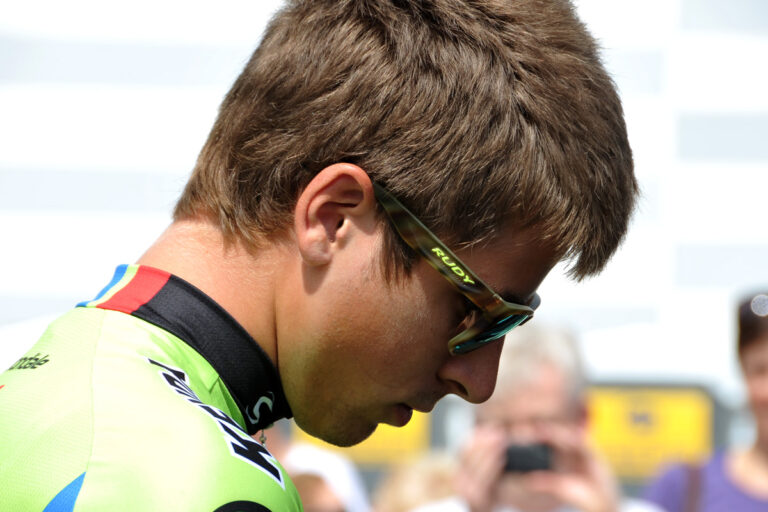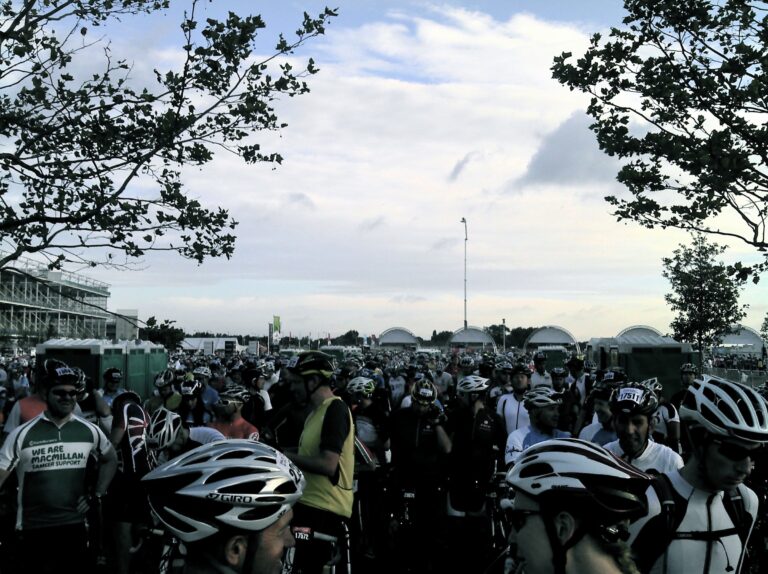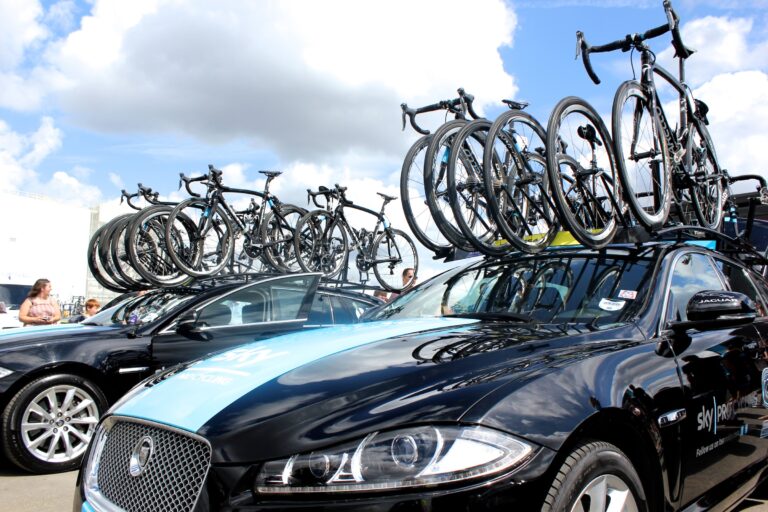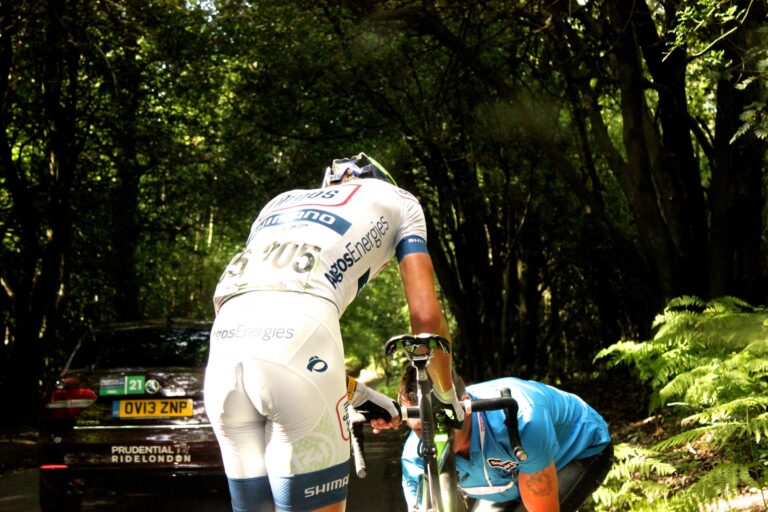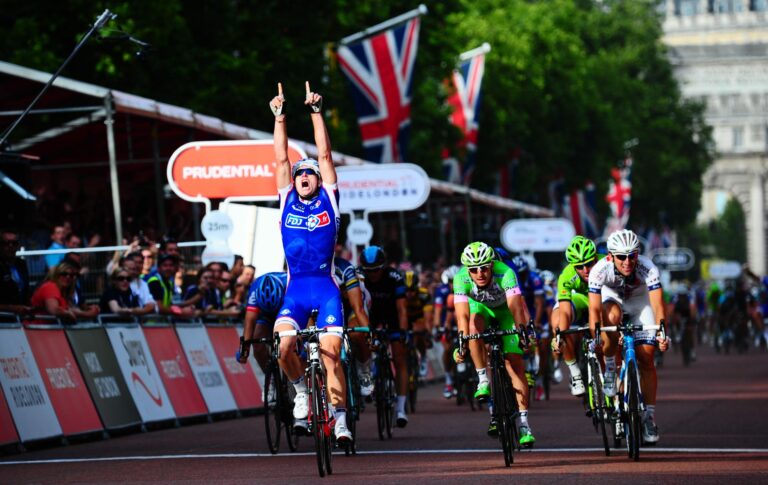We travelled to the Dijon HQ of French brand Lapierre to check out their new range of road bikes for model year 2014.
The steeds we gave the once over won’t go on public display until the Eurobike show in Germany at the end of August, but we can give you an early insight.
Part our itinerary involved a two-hour ride through the French countryside aboard the Xelius 800, second in line to the Lapierre road bike throne behind the Xelius Ultimate raced by FDJ in cycling’s elite UCI WorldTour (read more about it here).
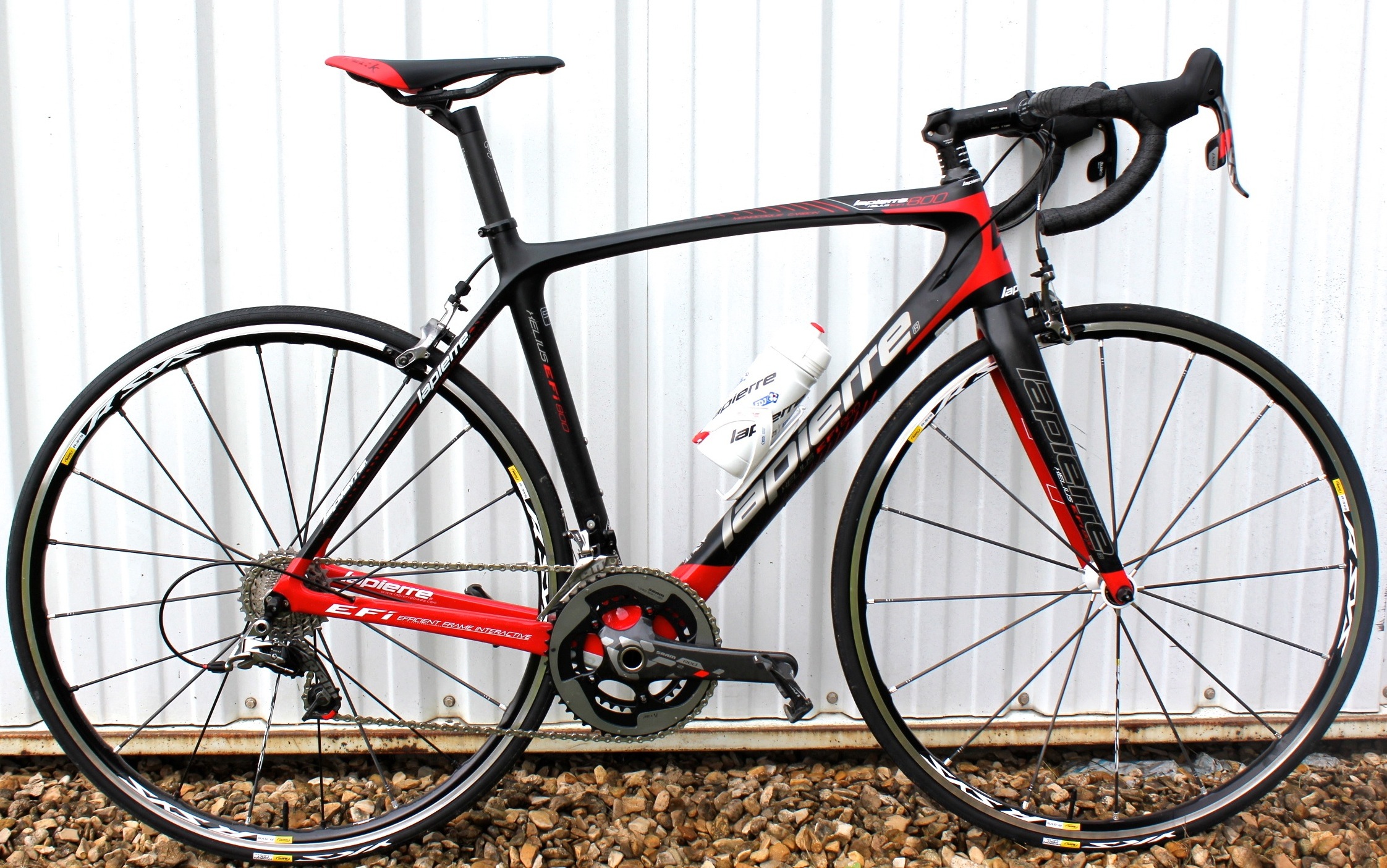
The chassis of the Ultimate and the 800 differ only in the carbon lay-up, and while this can be as significant as changing the ingredients in a recipe, it’s fair to say we didn’t complete our test ride feeling fobbed off with an inferior machine. Our test bike, equipped with SRAM’s new flagship Red 22 groupset, and 1355-gram Mavic R-Sys wheelset, tipped the Park digital scale at Lapierre’s factory at a scant 6.5kg.
It shares geometry and design features with the range-topping Ultimate. The top tube includes a notable ‘step’ as it nears the headtube for greater stiffness. The lower bearing of the latter has been reduced from 1.5″ to 1-1/4″ to create a more aerodynamic front profile and to save weight: advantages achieved, according to designer, Remi Gribaudo, without sacrifice of stiffness.
The tube profiles are modest in comparison to some (see the monstrous downtube on BMC’s Granfondo, for example) but Gribaudo has relied on the use of unbroken (“continuous”) carbon fibres in the junctions of downtube, bottom bracket, and chainstays for stiffness.
Two hours is scarcely enough time to provide a detailed assessment of a bike, and we’ve asked for an 800 to be sent to RCUK Towers for further testing, but some characteristics were immediately obvious.
First and foremost, the Lapierre Xelius 800 is a racing bike. This is a machine designed principally for speed. If you’re seeking a more comfort-oriented machine, you’d perhaps be better advised to consider their Sensium range. Every inch and angle of the Xelius is dedicated to velocity. The geometry, it is worth repeating, is identical to the machine being ridden by FDJ in the Tour de France.

Parallel 73 degree head and seat-tube angles and a long-ish top tube (550mm on our 52cm ‘medium’ test bike) delivered direct handling and an elongated riding position. A 52cm is our usual size, but would perhaps have been more comfortable on the 800’s 49cm incarnation, whose 130mm headtube and 535mm top-tube are closer to those of our personal steed. A standard rather than layback seatpost would have helped here, too.
The Xelius 800 excelled on the climbs of our jaunt around the vineyards surrounding Dijon. Some of the performance in this regard was undoubtedly a function of the low weight, but the tight rear triangle (the 408mm chainstays are present in every frame size) certainly played its part.
At the front end, the headtube felt suitably stiff and the steering was sufficiently direct to demand respect. On a descent accurately billed by our hosts as “grande” we felt compelled to keep our wits about us, and were reminded again of the 800’s primary function: to race. It doesn’t do cruise control – a good thing, in our opinion.
Talk of the “grande” descent perhaps offers a suitable juncture to discuss the other notable feature of the ride: our first experience of SRAM Red 22, specifically the brakes. These were the mechanical calipers (a distinction worth drawing for a groupset that also offers hydraulic rim and disc brake options) and its hard to praise their performance highly enough.
This favourable impression may owe something to the life-saving qualities displayed when we exited a narrow tunnel at speeds north of 30mph to discover an articulated lorry at a dead halt mere yards in front as it attempted to negotiate a tight bend.
Elsewhere, the shifting was impeccably precise, another feature best appreciated on the climbs of our ride out, and the dual control levers felt comfortable beneath the hands. Again, an extended test will be required to form a true opinion, and we’re in the queue for a sample group, so watch this space.
Lapierre’s UK importer, Hotlines, is unable to offer a price on the Xelius 800 until Eurobike, but a useful reference might be found in the price of the 2013 model: £4999.99.
Check back soon for a full review.
Website: Cycles Lapierre
UK distributor: Hotlines


